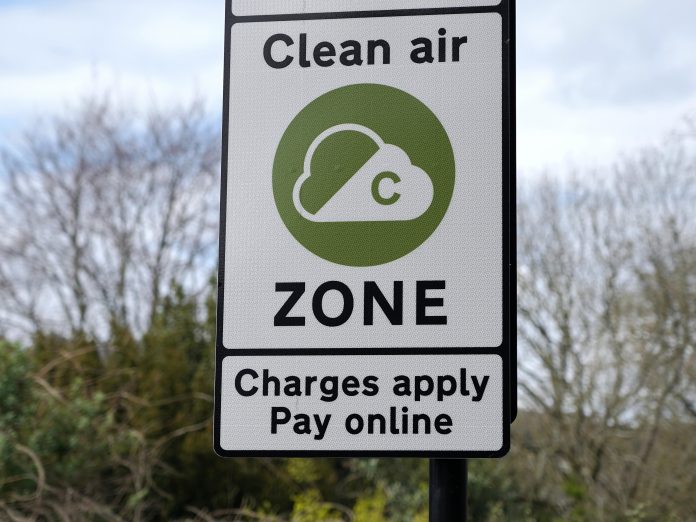Where do we begin in rolling out Clean Air Zones (CAZs) initiatives across the UK to tackle pollution and promote greener travel?
Clear Air Zones are being rolled out by councils across the UK. But where do we begin when it comes to implementing a successful scheme – and one that guarantees the buy-in of the public? Paul Meersman, Head of Marketing of strategic change enablement agency, CDS, explains…
‘Toxic air is linked to a new illness every year’
There’s no doubt that climate change is at the heart of this nationwide transition, as new research into the effects of pollution on health has revealed that “Toxic air is linked to a new illness every year.” And at the moment, many areas are exceeding air quality limits set by the Environment Act 1995.
CAZs have already been implemented or planned in cities such as Bristol, Bradford, and Birmingham – driving through these ‘zones’ behind the wheel of ‘less environmentally friendly vehicles’ could carry penalties.
But, launching something of this scale shouldn’t be underestimated – as Manchester recently found out with having to delay its roll-out until 2026. Others have already been successful, and some key lessons can be learnt.
Birmingham City Council launched its CAZ in 2021 and found a lot to consider to get it right. This required a well-planned communication strategy, from raising awareness of the changes and advising the public on greener transport to printing and mailing penalty charge notices (PCNs) and setting up campaigns.
1. Internal and external resources
Implementing a CAZ can introduce new challenges that local authorities haven’t yet dealt with so councils must first examine the internal resources available for the scheme’s set-up and operation.
This analysis will determine whether external help is needed. By outsourcing elements such as transactional print or seeking help tackling technical enablement, you can reduce costs and risk and boost team efficiency whilst the roll-out progresses.
2. Behavioural insight
The implementation of a CAZ requires a change in citizen behaviour. This can be difficult to manage, especially when something is deeply ingrained in daily life – such as commuting to work.
To influence this, councils must conduct thorough research into current user behaviour and develop a deeper understanding of the people the CAZ will affect. By collecting data on non-compliant vehicles, for example, and why people choose to drive them, it’s possible to identify the areas where simple changes can be made and others that need more attention.
This will also enable you to get to know citizens. As a result, you can ensure your communications are accessible and inclusive – driving engagement and compliance with the scheme.
Using this data as the foundation for your strategy, you can also decide which type of zone will suit everyone’s needs, whether charges will apply, and possible improvements to public transport services.
3. Communication and engagement
An area likely to be overlooked as councils focus on the implementation is initial communication with citizens – conveying the changes and the intended outcomes of the CAZ.
By failing to communicate the message early enough, residents and businesses will lack awareness, leading to frustration and confusion later down the line – harming support for and adoption of the scheme.
From experience, one-to-two years is enough time to start the conversation about the proposal, allowing the public to become familiar with it. This gives ample time for feedback, which can be used to drive potential changes that ensure the scheme works for both parties.
Also, communication about the scheme’s benefits and possible incentives for greener travel for residents is critical. Discounts for public transport, grants for electric vehicles, and cycle-to-work schemes need to be clearly presented as alternatives if this is something you offer.
From set-up to the launch and beyond, consistent engagement with the public is a must. This is an entirely new initiative for most, and many might consider it an unnecessary change to their routine, so questions will need to be answered. This process must be continuous, and resources should always be available to help.
4. Communication
This includes prominent signage, road markings, digital and physical comms, and direct contact with citizens. It is arguably the most important consideration and will determine the scheme’s success.
Email and social media campaigns, as well as physical information points and letters, will enable you to constantly engage with people to notify them of progress and drive change programs.
Accessibility is key. This must be at the forefront of your campaign strategy to ensure you reach everyone. Creativity and clarity in communications will also go a long way in helping to engage the community and convey the positive change the CAZ is ultimately making in the area.
One of the best pieces of advice is to ensure everything is in place to deal with everything from signage to printing PCNs, which can be challenging for a Local Authority given how many pieces of data need to be combined and output in a time-critical communication.
Written by Paul Meersman, Head of Marketing of strategic change enablement agency, CDS











